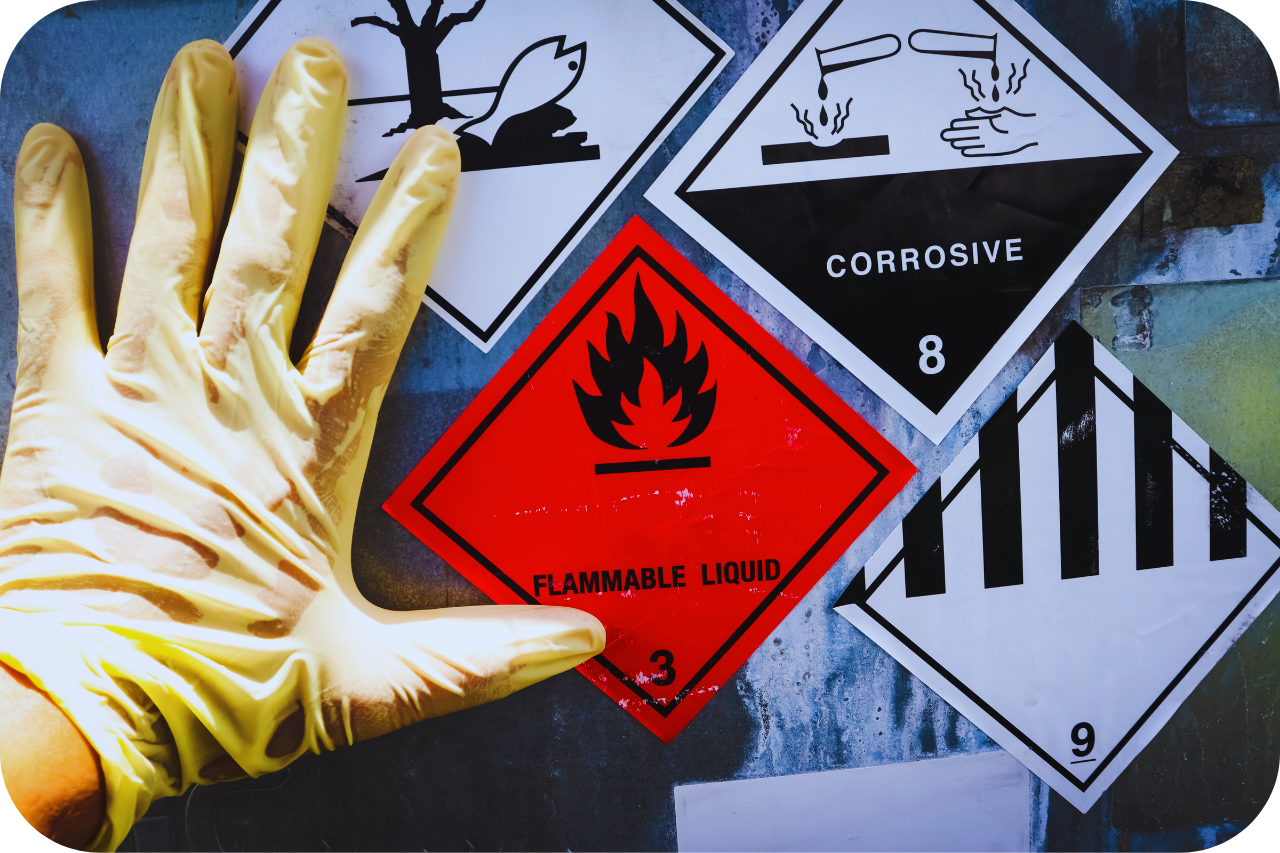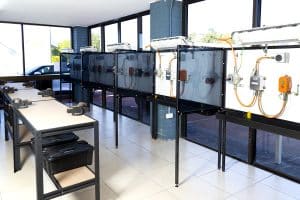The Best Guide To Roar Solutions
The Best Guide To Roar Solutions
Blog Article
Some Known Facts About Roar Solutions.
Table of ContentsFacts About Roar Solutions RevealedRoar Solutions Things To Know Before You BuyRoar Solutions for Beginners
In such an environment a fire or surge is possible when three standard problems are fulfilled. This is frequently referred to as the "unsafe area" or "burning" triangular. In order to protect installments from a prospective explosion a technique of evaluating and categorizing a potentially harmful location is called for. The objective of this is to ensure the correct selection and setup of devices to ultimately prevent an explosion and to make certain safety and security of life.
(https://telegra.ph/Roar-Training-Solutions-and-EEHA-Courses-Your-Gateway-to-Emergency-Care-Expertise-12-02)
No equipment ought to be set up where the surface temperature of the equipment is higher than the ignition temperature of the provided hazard. Below are some common dirt hazardous and their minimal ignition temperature. Coal Dirt 380C 225C Polythene 420C (melts) Methyl Cellulose 420C 320C Starch 460C 435C Flour 490C 340C Sugar 490C 460C Grain Dirt 510C 300C Phenolic Resin 530C > 450C Aluminium 590C > 450C PVC 700C > 450C Soot 810C 570C The likelihood of the risk being present in a concentration high enough to create an ignition will certainly differ from location to place.
In order to categorize this risk a setup is split right into areas of threat relying on the amount of time the harmful is present. These areas are described as Zones. For gases and vapours and dusts and fibers there are three zones. Zone 0 Zone 20 A harmful atmosphere is highly likely to be present and may exist for long durations of time (> 1000 hours per year) or perhaps continually Zone 1 Zone 21 A harmful atmosphere is possible yet not likely to be present for lengthy periods of time (> 10 450 C [842 F] A category of T6 suggests the minimal ignition temperature level is > 85 C [185 F] Dangerous location electrical equipment maybe created for use in greater ambient temperatures. This would certainly suggested on the rating plate e.g. EExe II C T3 Ta + 60C( This indicates at 60C ambient T3 will certainly not be exceeded) T1 T1, T2, T3, T4, T5, T6 T2 T2, T3, T4, T5, T6 T3 T3, T4, T5, T6 T4 T4, T5, T6 T5 T5, T6 T6 T6 A T Class rating of T1 indicates the optimum surface temperature generated by the instrument at 40 C is 450 C. Thinking the associated T Class and Temperature level ranking for the equipment are appropriate for the location, you can constantly utilize a tool with a more strict Division ranking than required for the location. There isn't a clear answer to this inquiry sadly. It truly does depend upon the sort of tools and what fixings need to be performed. Equipment with certain test treatments that can not be performed in the field in order to achieve/maintain third event ranking. Should come back to the manufacturing facility if it is before the equipment's service. Field Fixing By Authorised Personnel: Complex testing may not be needed nevertheless particular procedures may need to be followed in order for the tools to preserve its 3rd celebration rating. Authorized personnel have to be used to carry out the work correctly Repair have to be a like for like replacement. New component must be considered as a direct replacement requiring no special testing of the tools after the repair is full. Each tool with a harmful ranking need to be assessed independently. These are outlined at a high level listed below, but also for even more detailed info, please refer straight to the guidelines.
Little Known Facts About Roar Solutions.
The devices register is a thorough database of devices documents that consists of a minimum collection of areas to identify each item's place, technical specifications, Ex-spouse category, age, and ecological information. This details is vital for tracking and taking care of the tools efficiently within hazardous locations. On the other hand, for regular or RBI sampling inspections, the quality will certainly be a combination of Thorough and Close examinations. The proportion of Comprehensive to Close examinations will certainly be established by the Tools Threat, which is assessed based upon ignition risk (the possibility of a resource of ignition versus the likelihood of a flammable atmosphere )and the unsafe area classification
( Zone 0, 1, or 2). This variation will certainly additionally influence the resourcing requirements for work prep work. When Whole lots are specified, you can establish sampling strategies based upon the example size of each Lot, which describes the number of arbitrary devices products to be evaluated. To identify the needed example dimension, two facets need to be evaluated: the dimension of the Lot and the classification of assessment, which shows the level of effort that must be used( minimized, normal, or raised )to the examination of the Great deal. By incorporating the category of inspection with the Lot dimension, you can then develop the ideal denial criteria for an example, implying the allowable number of damaged items located within that example. For more information on this procedure, please refer to the Power Institute Standards. The IEC 60079 standard suggests that the optimum interval in between evaluations need to not exceed three years. EEHA evaluations will certainly likewise be carried out beyond RBI campaigns as part of arranged maintenance and devices overhauls or repairs. These evaluations can be attributed toward the RBI sample sizes within the influenced Whole lots. EEHA assessments are carried out to recognize mistakes in electrical devices. A weighted racking up system is crucial, as a solitary tool might have multiple mistakes, each with differing levels of ignition threat. If the combined rating of both evaluations is much less than twice the mistake rating, the Lot is regarded acceptable. If the Whole lot is still considered undesirable, it must undergo a full inspection or reason, which might cause stricter evaluation methods. Accepted Lot: The reasons of any type of mistakes are identified. If an usual failing setting is found, extra equipment might need evaluation and repair work. Mistakes are categorized by severity( Safety and security, Integrity, House cleaning ), making certain that urgent issues are Bonuses analyzed and addressed immediately to mitigate any kind of effect on security or operations. The EEHA data source need to track and tape the lifecycle of faults in addition to the restorative activities taken. Carrying out a durable Risk-Based Evaluation( RBI )method is crucial for guaranteeing compliance and safety and security in handling Electric Devices in Hazardous Locations( EEHA) (eeha). Automated Fault Scoring and Lifecycle Administration: Easily manage faults and track their lifecycle to improve assessment precision. The intro of this assistance for risk-based evaluation even more strengthens Inspectivity's position as a best-in-class remedy for regulative compliance, in addition to for any type of asset-centric assessment use case. If you want finding out more, we invite you to ask for a presentation and find just how our option can change your EEHA administration processes.
The Only Guide for Roar Solutions

In regards to eruptive danger, an unsafe area is a setting in which an eruptive ambience is present (or may be anticipated to be present) in amounts that call for unique precautions for the construction, setup and usage of devices. hazardous area electrical course. In this short article we explore the obstacles faced in the workplace, the threat control actions, and the needed competencies to function securely
It issues of modern-day life that we manufacture, keep or take care of a range of gases or fluids that are deemed flammable, and a range of dusts that are considered combustible. These compounds can, in specific problems, develop eruptive ambiences and these can have significant and tragic consequences. A lot of us are acquainted with the fire triangular remove any kind of among the 3 aspects and the fire can not occur, however what does this mean in the context of harmful locations? When breaking this down right into its simplest terms it is essentially: a combination of a particular amount of launch or leak of a particular material or product, blending with ambient oxygen, and the presence of a resource of ignition.
In most circumstances, we can do little regarding the levels of oxygen airborne, but we can have significant influence on resources of ignition, for instance electric equipment. Unsafe locations are recorded on the harmful area classification illustration and are identified on-site by the triangular "EX" sign. Below, among other key details, zones are divided into 3 types relying on the threat, the chance and period that an eruptive ambience will exist; Area 0 or 20 is deemed the most unsafe and Zone 2 or 22 is regarded the least.
Report this page